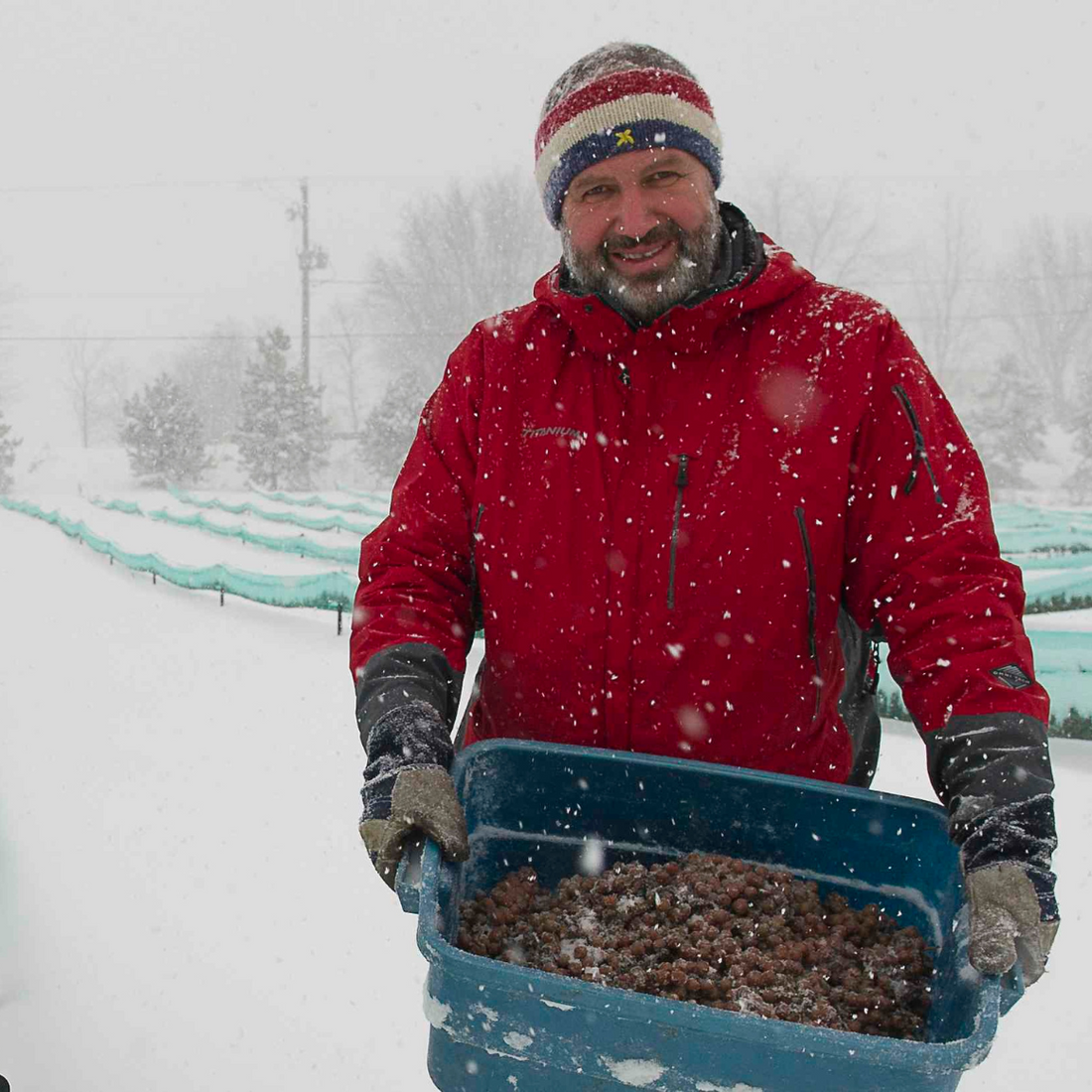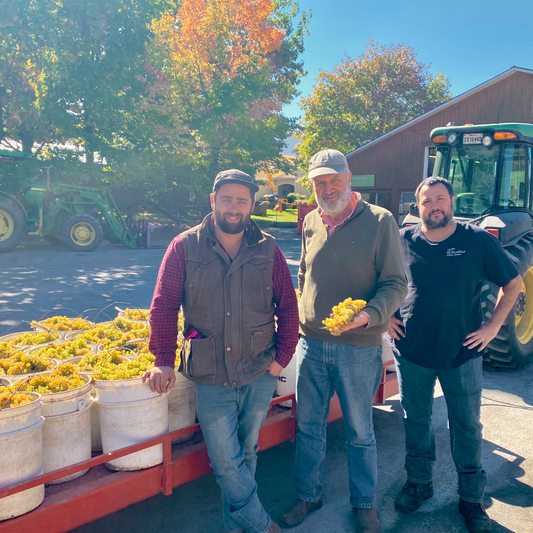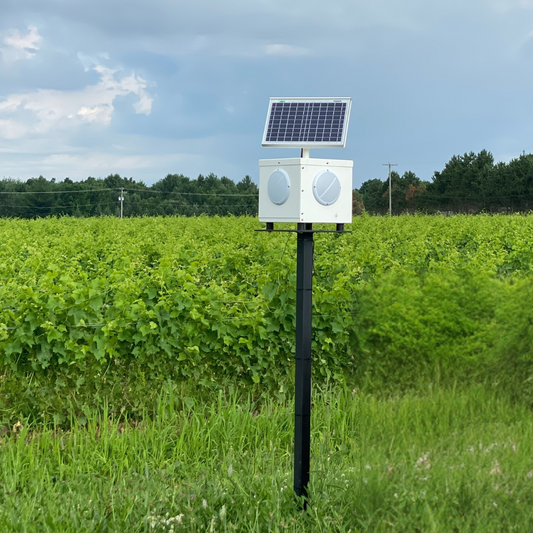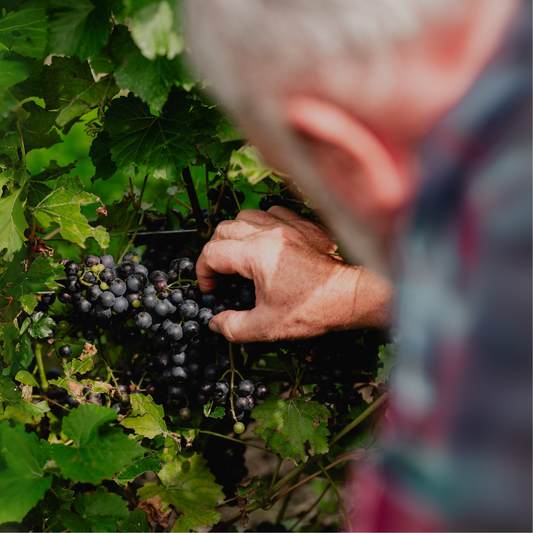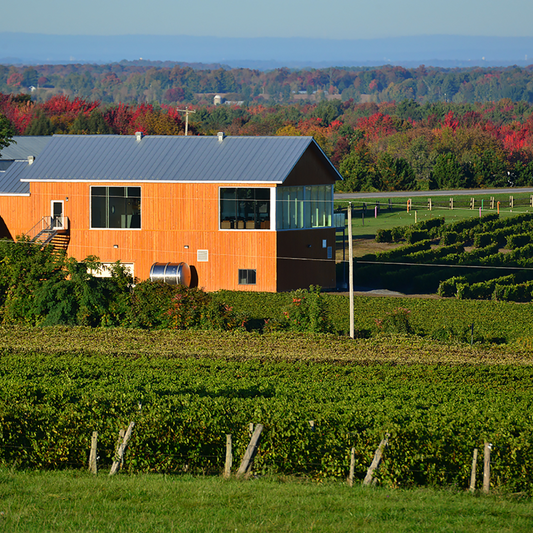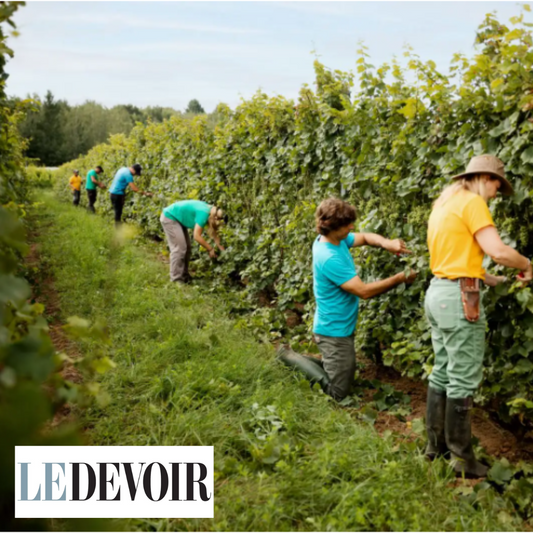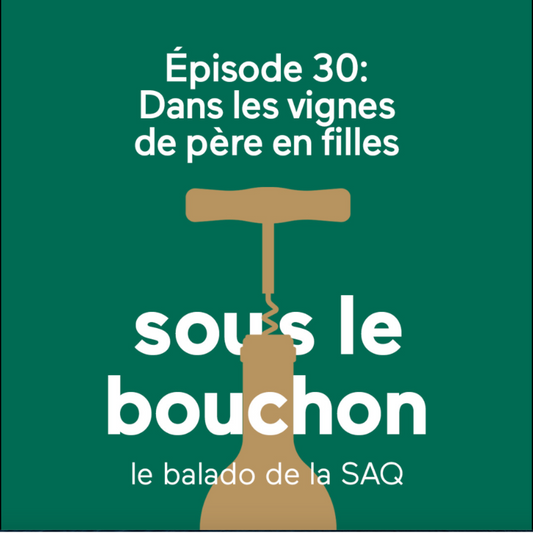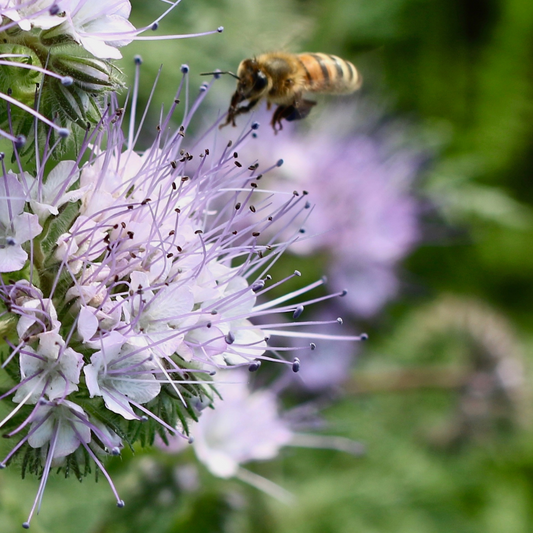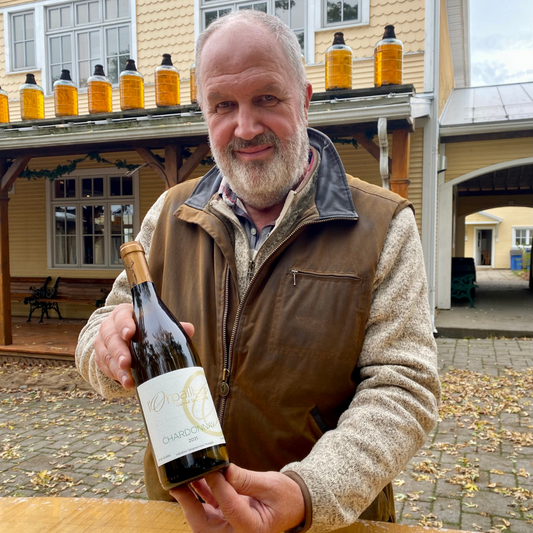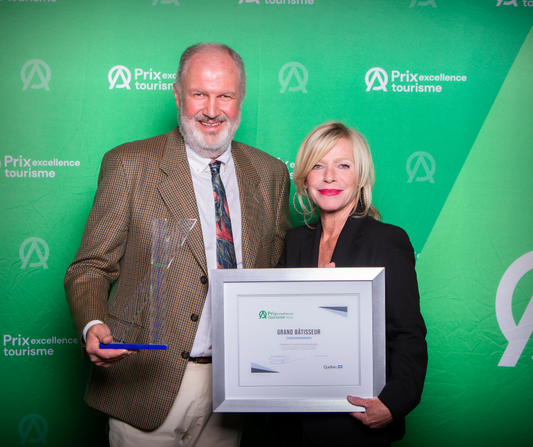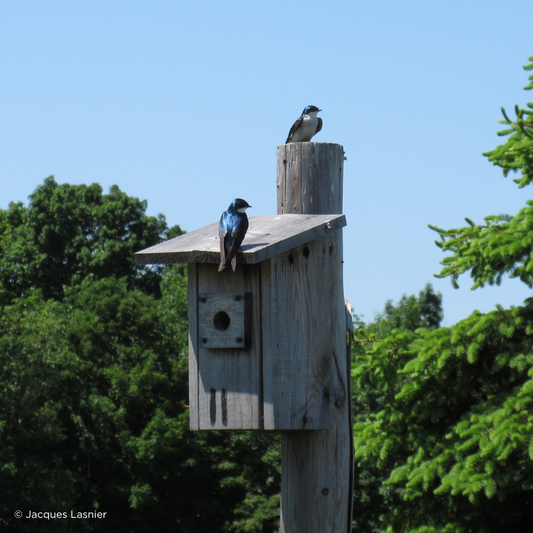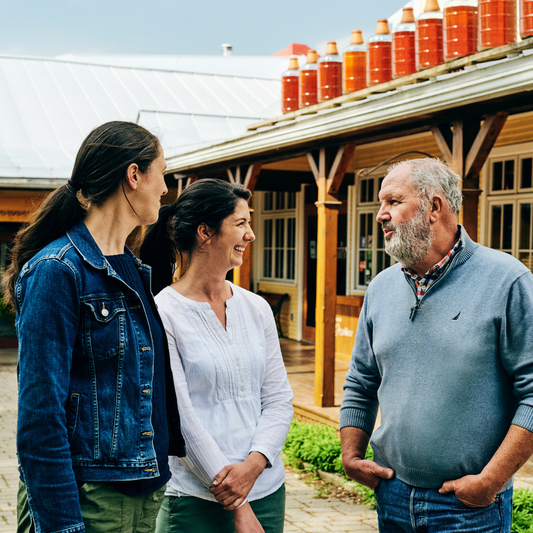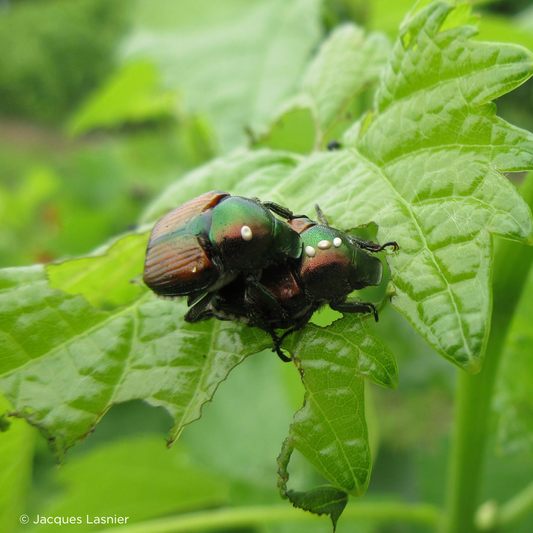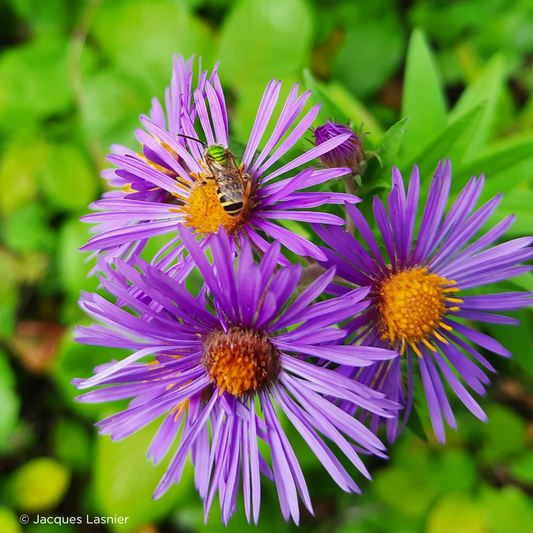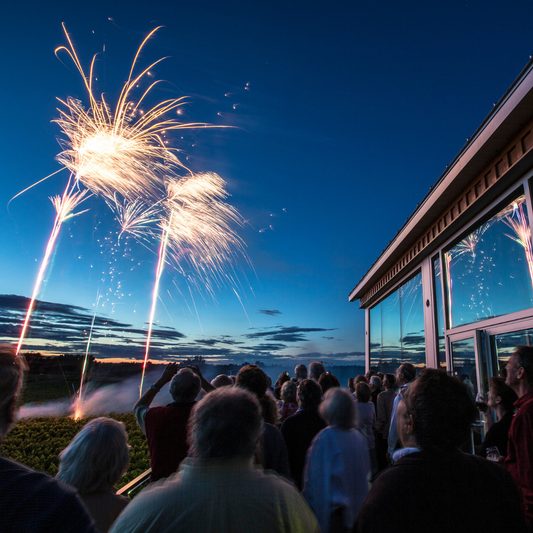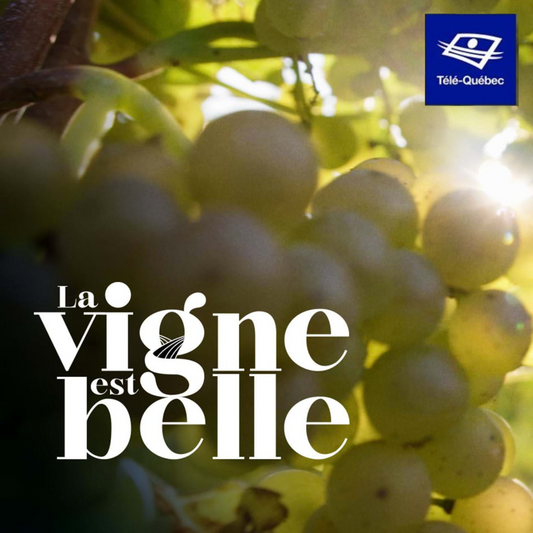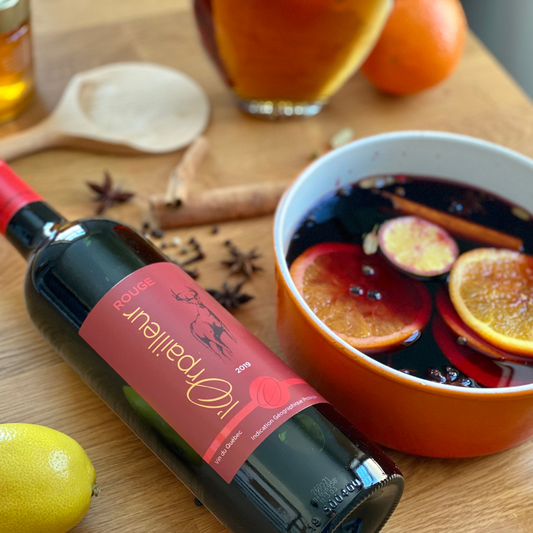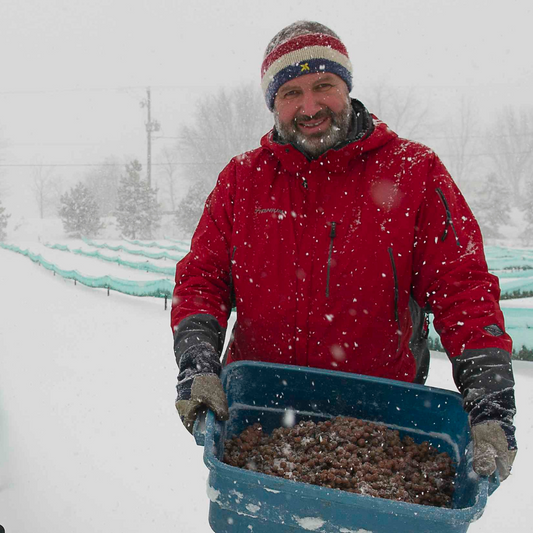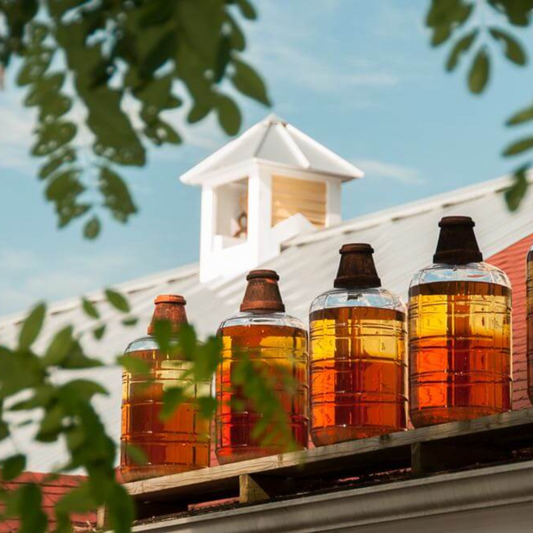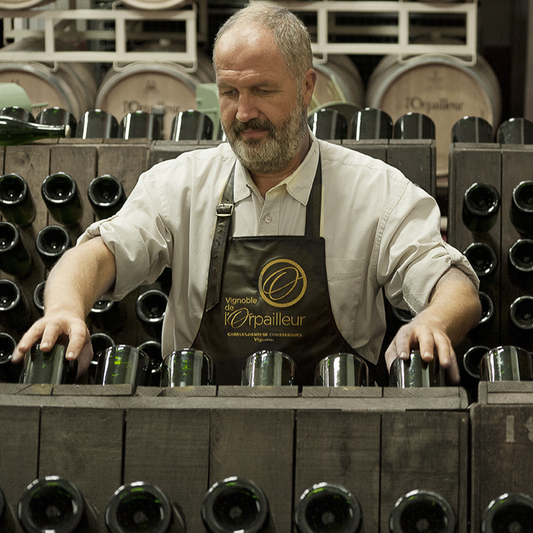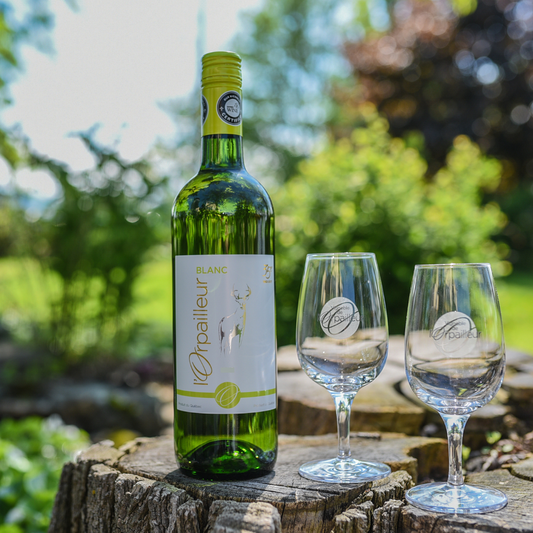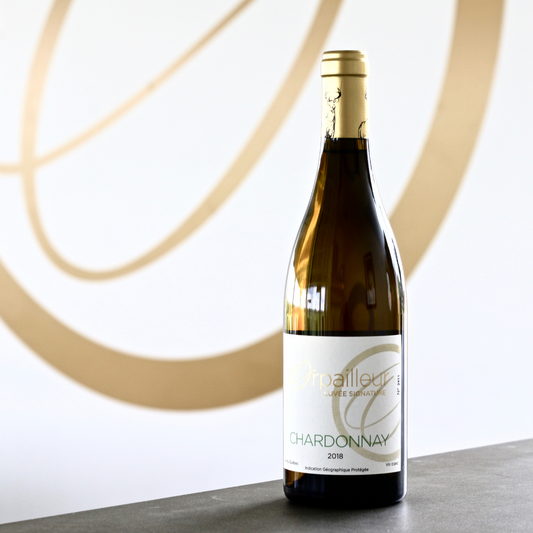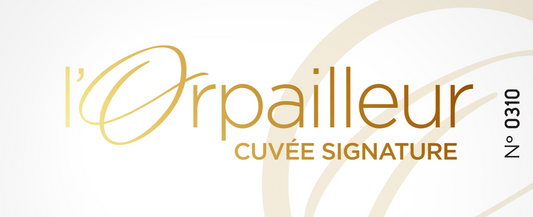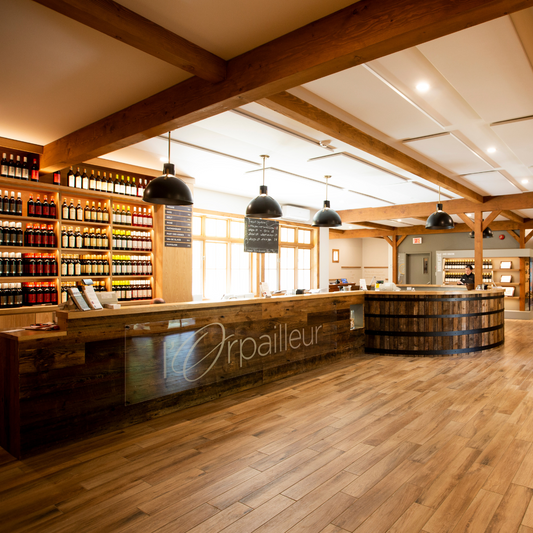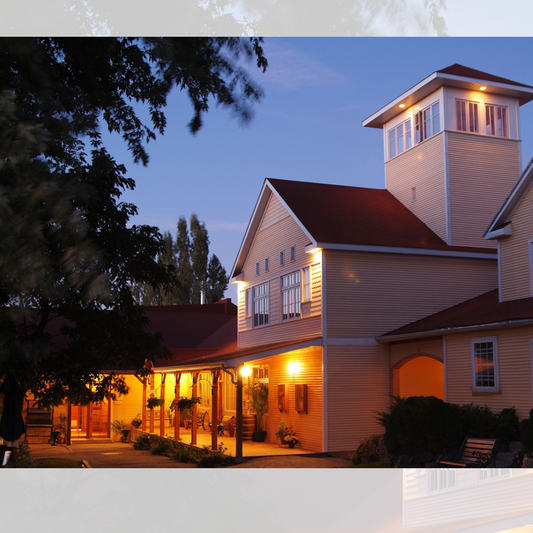History of Icewine
Vin de Glace is a sweet wine, made from overripe grapes, harvested and pressed frozen. The origin of "Eiswein" dates back to the end of the 18th century in Germany. Following a period of early frosts, winegrowers chose to press frozen grapes to avoid losing their harvest. The result obtained after vinification delighted them. Germany and Austria were for many years the main producers of icewine. Due to climate change they now produce only a small quantity and often one year out of three.
Icewine was subsequently introduced to British Columbia in 1973 by an immigrant of German origin. In the 1980s, Ontario winemakers recognized that their cold winters would provide the ideal conditions for producing exceptional Icewine. In Quebec, winegrowers followed suit and began producing ice wine in 1994.
Quebec has its reserved appellation
Since December 2014, Quebec has had its appellation: Protected Geographical Indication (PGI) Quebec Ice Wine in order to protect the traceability, authenticity and specificity of the wine, thus helping to enhance the notoriety of Quebec Ice Wines. This certification guarantees that:
- The wine is made exclusively from grapes that have frozen naturally on the vine and pressed in this state at an outside temperature less than or equal to -8°C.
- The wine is made from grapes grown in Quebec, within the defined geographical area.
- The accreditation committee conducts tests to assess the marketability of the product and to ensure that the product has the qualities required to use the Vin de glace du Québec appellation.
Since 2014, 11 Quebec vineyards have produced ice wines under this appellation, including Orpailleur.

Goldpanner's Ice Wine
L'Orpailleur has been producing Ice Wine since 1997. Having ideal conditions in Quebec to produce sweet wines, we took up the challenge, a few years ago, to produce this very special product. This wine is for us the wine of the extreme, because its aromatic complexity is due to the autumnal conditions which will give in final one of the most aromatic wines in the world.
While most of the fruit including grapes around the world are picked during summer weather conditions, this grape will be picked not only in the snow, but with extreme temperatures approaching -12C. What a great challenge for winegrowers from the south of France!
grape variety
The grape variety we use is Vidal. We find Riesling in the genealogy of Vidal. The latter, like Riesling, has the particularity of having a very thick skin that is resistant to bad weather. This will allow it to lose throughout the months of November and December, according to freezes and thaws, part of its water through the pores of the skin of the grain. Without the grapes being affected by botrytis. Our terraced plantation in Vidal is on average 20 years old and is spread over seven enclosures located to the north and south of our main buildings, at an altitude of 130 metres.

Production method
1. Netting
The traditional harvest generally takes place towards the end of September. While for ice wine, the bunches of grapes remain on the vine until the end of October. When the leaves have fallen and the vine goes dormant, the grapes are netted above the vines. This allows us to clear the base of the vine plants to proceed with hilling and thus raise the plants before the ground freezes.

2. Desiccation of grapes
The grapes are then exposed to the wind, to successive freezes and thaws at the end of autumn and the beginning of winter, which allows them to gradually lose their water. This will result in a high concentration of sugar and flavors inside the bean. The objective of this long net period is the desiccation of the grapes. Obtaining a very good Icewine is often the result of good temperature variations between the freezing and thawing periods in November and December.

3. Ice harvest
Then, the ice harvest will generally take place between December 15 and January 15. This is followed by the pressing where the temperature must oscillate between -8°C and -12°C so that the water remaining in the grain is frozen. We will thus obtain a juice (must) which has become very rich and concentrated which remains in a liquid state because of its high sugar content. This juice will titrate about 440gr of sugar per litre.
You would never think that something so beautiful with hints of apricot could come from these slightly dehydrated chestnut grapes. It's a fantastic difference between the appearance of the grapes and the exuberance of the aromas of the finished product!
– Marc Grau, cellar master.
4. The Press
When a fresh harvest press in September lasts 3 hours, it will last for ice wine about 72 hours, because this very syrupy must takes too long to extract. Every drop is worth its weight in gold!
When 100kg of fresh grapes gives about 70 to 75 liters of juice, this same 100kg only gives 10 to 12 liters of juice in December.

This exceptional wine is the fruit of the work of our hands and the heart that we have been putting into it since 1997. It requires many hours of manual work, because these operations cannot be mechanized. All these efforts mean that it is with great emotion that we taste the finished product every year!

Agreements
Sweet wine with aromas of apricot, honey, candied fruit and mango. On the palate, this complexity of flavors is supported by a refreshing acidity and a nice balance with imposing fruit aromas.
To be enjoyed chilled as an aperitif, or with terrine or pan-fried foie gras, seasoned cheeses (blue cheeses or even soft cheeses with a washed crust), crêpes with goat cheese and peach jam. It also goes well with desserts with white-fleshed fruits.
Do not hesitate to accompany this very special wine with certain savory dishes in order to fully appreciate all its aromatic complexity.

Awards and Recognition
L'Orpailleur contributes to the fame of Ice Wine. In fact, since 1997, more than 30 gold medals in international competitions have been awarded to it, thus allowing us to position Quebec on the world wine map.
The 2018 vintage won a Grand Gold medal at the Sélections Mondiales des Vins Canada 2020 with a score of 94.4/100 and is part of the Top 50 of this largest international wine competition in North America.
Let's raise our glass, close our eyes and be happy!

